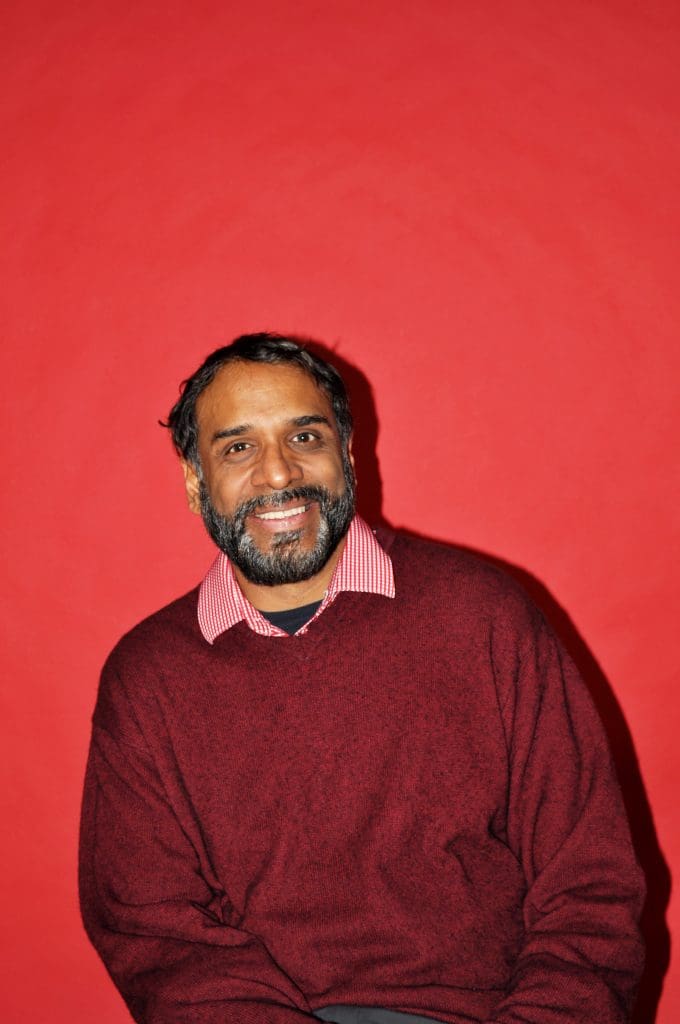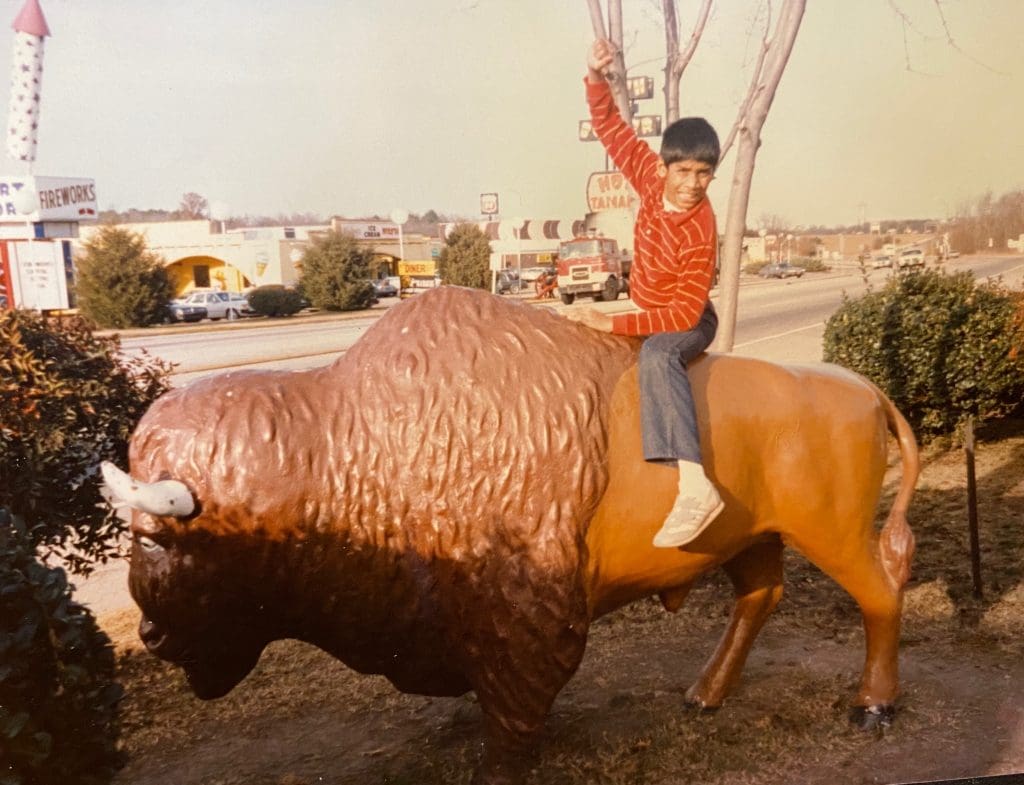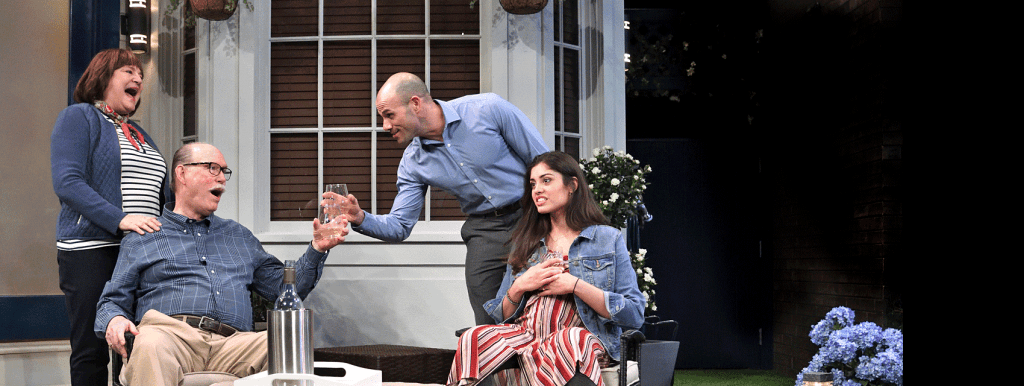By Ravi Shankar
Ravi Shankar is an award-winning author, editor, and poet. His memoir Correctional details his detention at Hartford Correctional Center, which, in the below article, he connects to the themes of Sweeney Todd.
On the surface, my story shares little with the macabre musical Sweeney Todd: The Demon Barber of Fleet Street, and I, a tentatively hopeful vegetarian pacifist, share even less with the misanthropic razor-wielding barber with a melodic zeal for revenge via meat pie. Dig a little deeper, however, and you’ll find a shared exploration of the corruption of the judicial system.

Before he was Sweeney Todd, our anti-hero was Benjamin Barker, an innocent man falsely accused by Judge Turpin, who coveted his wife and sentenced him to 15 years of hard labor in an Australian penal colony. Similarly, my life was overturned due to my own unexpected encounters with the American criminal justice system. The first was when I was erroneously arrested and held by the NYPD under the “stop-and-frisk” policy that targeted millions of New Yorkers, predominantly people of color, for nearly two decades before being found unconstitutional. Subsequently, I violated a later probation for driving on a suspended license. For this, I had to serve a 90-day pretrial detention at Hartford Correctional Center, a level 4 high-security jail in Connecticut. This, said the judge, was “to satisfy the state.”
Like Barker, I too was traumatized by my brief glimpse into our criminal justice system. It’s one thing to know something theoretically, but it’s another to experience it viscerally, firsthand, and to find concerning elements at every single level of the experience — from policing and adjudication to incarceration and reentry. The racial disparity of the experience was incontestable, as the vast majority of those I met were men of color. Other inequities were also evident, from the sentences those given public defenders received versus those who hired paid attorneys. Not to mention the predicament of those who had not even been found guilty of any charge but, because they had a cash bond, had to wait in jail for a court date for months. Moreover, though a trial by jury is considered the bedrock of the United States criminal justice system (according to the Marshall Project), more than 94 percent of felony convictions at the state and federal level are the result of plea bargains.
The audience never knows what exactly transformed the mild-mannered Benjamin Barker into the psychotic Sweeney Todd. But I can tell you the conditions I experienced were not conducive to rehabilitation, but instead fostered dysregulation. Books were censored, overpriced phone calls were eavesdropped on, some of the correctional officers were casually sadistic, sunlight and nutrition and movement were severely curtailed, and even the bathrooms were surveilled. In such an environment, men and women don’t heal; they only deepen their trauma and harden into their shame. They become institutionalized. They lose their voices. Their fear turns to rage. From being commanded by attorneys not to speak for fear of self-incrimination to being stripped, body-searched, and given inmate numbers, every aspect of the experience is dehumanizing. No wonder the U.S. has one of the world’s highest recidivism rates.
I met many judges, some of whom I describe in my memoir, Correctional. While they were perhaps not as overtly perverse as Judge Turpin, some were scarier for being so ordinary and apparently apathetic to having in their hands the lives of actual people for whom mass incarceration has a lasting generational impact. So many of the men I met came from families where others had been incarcerated as well. When they got out, they found it exceptionally difficult to earn gainful employment because of their criminal records. Indeed, one of the few skills I saw being taught while at HCC was the art of barbering, the idea being these men could not be capable of much more than that. My experience teaching in correctional facilities in Connecticut, Rhode Island, and Massachusetts has provided me with evidence to the contrary. The men and women I met, if given the right job training and mental health assistance, could become radiologists and social workers, airline pilots and IT professionals.
Finally, another theme shared between my experience and the musical is the deadly intoxication of revenge. Just as Sweeney Todd metastasizes into an obsessive psychopath, I still rage at the face of the officer who racially slurred and roughly handcuffed me and who now haunts me in my dreams. I can still name each reporter from the Hartford Courant who sensationalized my story and turned me into a caricature. One of my supposed friends referred to me as “a wild animal escaped from the zoo,” and I flare with animus at being abandoned at my time of greatest need by those I trusted.

However, I found salvation not in revenge, but in forgiveness. This may be where my story departs from that of Benjamin Barker. I found my transformation through what Buddhist monk Thich Nhat Hanh calls loving kindness.
“Suppose someone has made you suffer,” he writes, “You think of him or her as very cruel. That person has inflicted on you a lot of suffering, on your family, on your country. And because of that you want that person or that group of persons to suffer a lot for you to get relief. You are thinking in terms of punishment. That hate, that anger, that will to revenge is a kind of fire that continues to burn your body and your mind, and you are in hell. Hell is here in the here and the now.”
While Sweeney Todd succumbed to that hell, I chose to transform the feeling into art. In doing so, I hope to help direct our attention back to the American infatuation with anger and punishment. We can choose to be a society that devours its least fortunate members as willingly as one of Mrs. Lovett’s meat pies, or we can recognize our own reflections glinting off the sharpened blade and decide that there’s got to be a better way.
